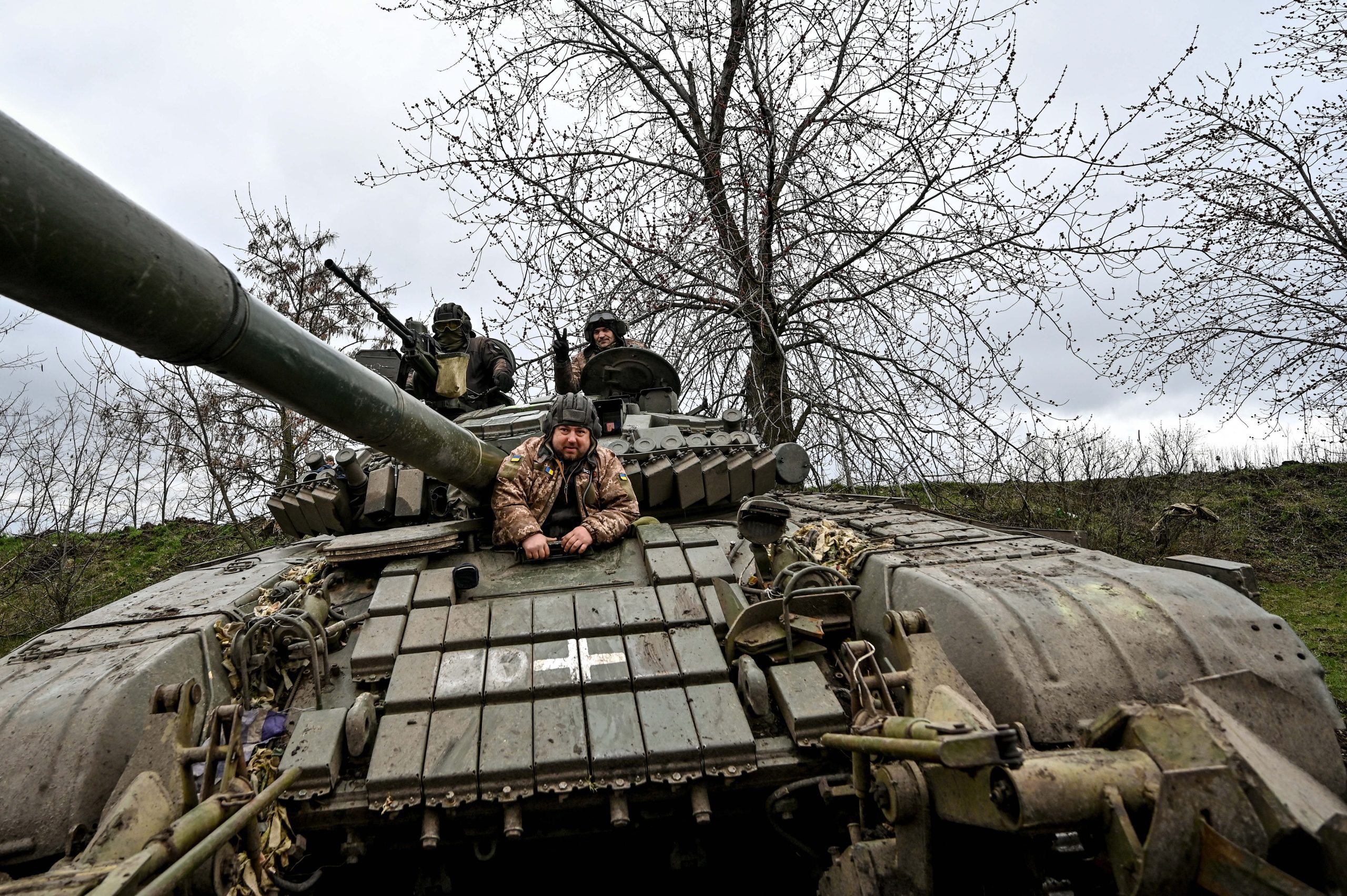Russia's Spring Offensive Falters: Can Warmer Conditions Turn The Tide?

Table of Contents
Challenges Faced by the Russian Spring Offensive
The Russian spring offensive has encountered numerous obstacles, significantly slowing its progress and raising concerns about its ultimate success. These challenges can be broadly categorized into difficult terrain, a strong Ukrainian defense, and significant logistical bottlenecks.
Difficult Terrain and Mud Season
The infamous "rasputitsa," or mud season, has played a crucial role in hampering the Russian advance.
- Spring thaw creating impassable mud: The melting snow has transformed vast swathes of Ukrainian terrain into a sea of mud, rendering many roads and fields impassable for mechanized units.
- Hindering mechanized troop movements: The heavy Russian tanks and armored personnel carriers are particularly vulnerable, becoming bogged down and easily targeted by Ukrainian forces. Movement is slow and unpredictable.
- Logistical challenges in supplying ammunition and equipment: The muddy conditions make the transportation of crucial supplies, including ammunition, fuel, and food, extremely difficult and significantly delays resupply efforts.
- Impacting artillery effectiveness: The soft ground limits the mobility of artillery pieces, reducing their effectiveness and hindering their ability to provide crucial fire support to advancing troops.
The impact of the rasputitsa on military operations is profound. Historical examples abound, demonstrating the debilitating effect of such conditions on mechanized warfare. The heavy clay soils of eastern Ukraine, when saturated with water, become virtually impassable, creating a natural barrier to military movement. This significantly impacts the effectiveness of Russia's traditionally armor-heavy approach.
Strong Ukrainian Defense
The Ukrainian military has mounted a surprisingly resilient defense, effectively neutralizing much of the Russian offensive power.
- Effective Ukrainian defensive fortifications: Ukraine has established a network of well-prepared defensive positions, utilizing trenches, anti-tank ditches, and minefields to slow the Russian advance.
- Skillful use of Western-supplied weaponry: The provision of modern weaponry from Western allies, including anti-tank missiles like Javelins and NLAW, and long-range artillery systems like HIMARS, has proven crucial in inflicting heavy losses on Russian forces.
- Successful counter-offensives: Ukraine has launched successful counterattacks in several sectors, disrupting Russian offensives and reclaiming some lost ground.
- High morale among Ukrainian soldiers: The strong resolve and high morale of Ukrainian soldiers, fueled by their fight for national survival, significantly contributes to their effectiveness on the battlefield.
- Exploitation of Russian weaknesses: Ukraine has cleverly exploited Russian weaknesses, such as logistical vulnerabilities and a lack of adequate coordination between different units, to blunt the offensive's momentum.
The skillful use of Western-supplied weaponry and the effective use of combined arms tactics, including artillery, drones, and infantry, have been pivotal in the Ukrainian defense. The successful counter-offensives have disrupted Russian operational plans and inflicted significant losses, illustrating the high level of competence displayed by the Ukrainian armed forces.
Logistical Bottlenecks
The vast distances and challenging terrain have created significant logistical bottlenecks for the Russian military.
- Difficulties in supplying troops and equipment: The sheer scale of the operation presents immense challenges in transporting personnel, equipment, and ammunition to the front lines.
- Vulnerability of supply lines: Ukrainian forces have targeted Russian supply lines, disrupting the flow of essential resources to the front. This has slowed the advance and made it difficult to sustain offensive operations.
- Reliance on outdated infrastructure: Russia relies on outdated infrastructure and logistics systems, making them more vulnerable to disruption and hampering their ability to adapt to changing battlefield conditions.
- Impact of Ukrainian attacks on supply routes: Ukrainian strikes on bridges, railways, and roads have significantly reduced the capacity of Russia to move supplies and troops efficiently.
- Slow pace of reinforcement: The difficulties in supplying reinforcements have limited Russia’s ability to replace losses and sustain a prolonged offensive.
The logistical challenges faced by Russia highlight the importance of effective supply chains in modern warfare. The vulnerability of long and extended supply lines has consistently proven to be a critical weakness for Russia in this conflict.
The Potential Impact of Warmer Weather
The arrival of warmer weather could significantly alter the battlefield dynamics, potentially offering advantages to both sides.
Improved Mobility
- Drier ground conditions: The receding of the spring thaw will create drier ground conditions, improving the mobility of armored vehicles and artillery.
- Increased maneuverability of tanks and armored vehicles: Tanks and other heavy vehicles will be able to move more freely, enabling faster advances and more flexible maneuvers.
- Improved logistical operations: The improved ground conditions will facilitate the transportation of supplies and reinforcements, improving the sustainability of the offensive.
- Faster troop deployment: The ability to move troops and equipment more quickly will enhance the speed and efficiency of military operations.
- Potential for flanking maneuvers: Increased mobility will allow for more complex maneuvers, such as flanking attacks, to outflank and potentially encircle Ukrainian forces.
The improved mobility will likely favor Russia, given their dependence on armored warfare. The ability to move more swiftly and effectively will provide them with tactical advantages they have lacked during the mud season.
Increased Combat Effectiveness
- Easier movement of artillery: Artillery will be able to reposition more easily and quickly, providing more effective fire support for advancing units.
- Improved accuracy of strikes: The drier ground conditions may reduce the impact of mud on artillery accuracy.
- Increased firepower: The increased mobility and improved accuracy of strikes will allow Russia to deliver more effective firepower.
- Greater potential for breakthroughs: The combined effect of improved mobility and firepower could potentially lead to breakthroughs in Ukrainian defensive lines.
- More effective combined arms operations: Improved coordination and maneuverability will enhance the effectiveness of combined arms operations.
Warmer weather will likely lead to a significant increase in the lethality of the conflict as both sides will enjoy more effective combined arms capabilities.
Counter-arguments and Risks
While warmer weather offers potential advantages, it also presents challenges and risks for both sides.
- Warmer weather might benefit Ukraine too: The improved ground conditions will benefit the Ukrainian forces as well, allowing them to enhance their mobility and counter-offensive capabilities.
- Increased risk of wildfires: Drier conditions increase the risk of wildfires, which could pose a threat to both military installations and civilian populations.
- Dust storms affecting visibility: Warmer weather could also bring dust storms, reducing visibility and hindering the effectiveness of military operations.
- Vulnerability to air attacks: Improved visibility might increase the vulnerability of both sides to air attacks.
- Potential for intensification of fighting: The improved conditions for maneuver could lead to a more intense and potentially more brutal phase of the conflict.
The potential for warmer weather to benefit both sides underscores the complexity of the situation. The impact will not be solely beneficial to Russia, and the risks associated with drier conditions must be considered.
Conclusion
Russia's spring offensive has faced significant headwinds due to unfavorable weather and a tenacious Ukrainian defense. The initial setbacks highlight the challenges of conducting large-scale military operations in difficult terrain and against a determined enemy. However, the arrival of warmer weather could potentially shift the battlefield dynamics. Improved mobility and enhanced combat effectiveness for both sides present new strategic considerations, making it imperative to closely monitor the situation. The evolving impact of weather and other factors on the war's trajectory demands ongoing analysis. The implications of Russia's spring offensive, and its potential turning points, are significant and deserve careful consideration. Stay informed on the latest developments for in-depth analysis of Russia's spring offensive and its future unfolding.

Featured Posts
-
 Kshmyr Tnaze Tyn Jngwn Ke Bed Kya Mstqbl He
May 01, 2025
Kshmyr Tnaze Tyn Jngwn Ke Bed Kya Mstqbl He
May 01, 2025 -
 Eurovision Song Contest 2025 Australian Live Streaming And Tv Broadcast Details
May 01, 2025
Eurovision Song Contest 2025 Australian Live Streaming And Tv Broadcast Details
May 01, 2025 -
 Bof A On Stock Market Valuations Addressing Investor Concerns
May 01, 2025
Bof A On Stock Market Valuations Addressing Investor Concerns
May 01, 2025 -
 Venerdi Santo L Interpretazione Di Feltri
May 01, 2025
Venerdi Santo L Interpretazione Di Feltri
May 01, 2025 -
 Remembering Priscilla Pointer Celebrated Actress Dies At 100
May 01, 2025
Remembering Priscilla Pointer Celebrated Actress Dies At 100
May 01, 2025
